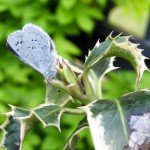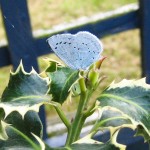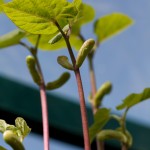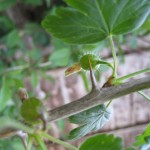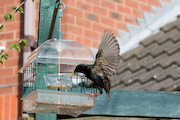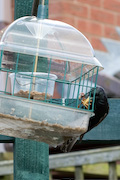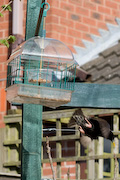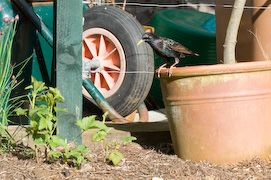A dry day in the garden gave us time to catch up with a few bits and pieces and take note of what was growing well (notably not the courgette which is now completely lacking leaves). The tomatoes (Gardener’s Delight and Beefeater) have now been planted into larger tubs, as has my remaining courgette. Sweet Peppers (Mini Bell and Sweet Nardello) as well as Chilli Peppers (Heatwave and Hungarian Hot Wax) were also put into larger pots, but, following a trip to Ryton Organic Gardens last year, in smaller pots than in past years in the hope that they may be more successful. These last may be transplanted to the front of the house once we have finished the front garden to try to ripen the fruit.
Also seemingly growing well were the families of both goldfinches and greenfinches which arrived in the garden this morning, presumably recently fledged (one young goldfinch and four young greenfinches). They were much quieter than the baby sparrows, and, generally quite well behaved.
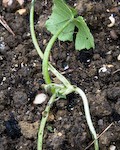
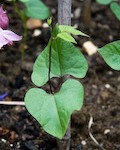 Â I know that I could prevent this with little blue pellets, but we are trying to be as organic as possible and are trying to encourage the ecosystem (although at this rate I may start charging the frogs board and lodgings as they are not earning their keep). Â I have another courgette in reserve, but I will plant this in a pot this weekend.On the plus side, I have planted my beans in various parts of the garden, and some of them are still in one piece. Â
 I know that I could prevent this with little blue pellets, but we are trying to be as organic as possible and are trying to encourage the ecosystem (although at this rate I may start charging the frogs board and lodgings as they are not earning their keep).  I have another courgette in reserve, but I will plant this in a pot this weekend.On the plus side, I have planted my beans in various parts of the garden, and some of them are still in one piece.  